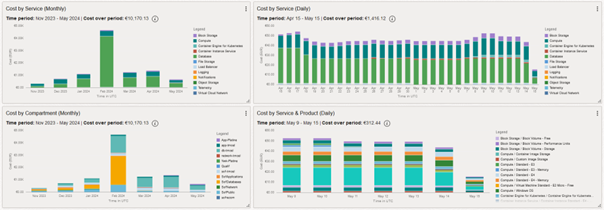Optimizing IT infrastructure resources, particularly capacity management, requires close collaboration between technical, business, and financial teams. The goal is to resolve issues of resource over-provisioning, which are often a source of tension. Business teams anticipate growth in usage and aim to avoid capacity incidents, while technical teams must ensure optimal utilization and manage purchases to meet the expectations of financial teams.
The problem to address
In a context of owned or leased infrastructures, monitoring, optimizing, and predicting IT resource consumption allows for precise financial investment sizing, both in terms of timing and volume, based on the needs of the business and associated applications.
The arrival of public cloud solutions has disrupted this dynamic by introducing complex billing models based on usage, timing, and varying according to solutions. However, the immediate impact of cloud resource consumption on costs facilitates understanding for business teams and simplifies resource adjustment by technical teams, opening up new opportunities for alignment and accountability.
Optimize your IT Infrastructure resources with our FinOps solutions
Our cloud expert consultants have identified several levers to optimize costs and maximize the efficiency of IT infrastructure resources:
1.Cost and consumption visualization and monitoring
- Customized Financial Dashboards: We customize financial dashboards from major cloud providers (AWS, GCP, Azure) for real-time visibility of costs and consumption.
- Budget Consumption Alerts: Setting up alerts at 50%, 90%, and 100% to quickly detect overruns and take corrective actions.
- Using Grafana: Graphical comparison of reserved resources and their actual usage to adjust resources based on real needs.
2. Optimal resource management
- Initial Allocation Based on Precise Metrics: Optimal resource allocation from activation to avoid over-costs.
- Resource Tagging Policy: Facilitates stopping resources outside peak hours, decommissioning after a certain period, and putting non-critical applications on standby.
- Auto-Scaling Activation: Automatic adjustment of resources based on load for efficient use.
- Using Predictive Tools: Recommendations based on consumption history to anticipate future needs.
- Automation with IaC: Infrastructure as Code to improve reproducibility and gains when scaling.
3. Cost optimization based on Cloud Offers
- Long-Term Commitment Discounts: Maximizing savings by taking advantage of offered discounts.
- Preemptible or Spot Instances: Use for non-critical workloads to reduce costs.
4. Application optimization
- Application Architecture Analysis: Evaluating the impacts of an application transformation to improve performance and reduce resource consumption.
5. Shared FinOps Culture
- Training and Awareness: Supporting client teams on FinOps best practices.
- Collaboration Between Financial and Technical Teams: Establishing governance and processes for shared decisions.
- Project Team Accountability: Managing their own budget with metrics to measure FinOps effectiveness.
- Carbon Footprint Calculation: Evaluating the impact of resource optimizations on the carbon footprint.
Achieved benefits: Significant gains and Cost optimization
Implementing our FinOps solutions represents a profitable investment with proven gains. Here’s what you can expect:
a) IT resource optimization
- 30% to 50% Reduction in IT Resources (RAM, CPU): Our solutions allow for significant resource optimization.
- License Cost Reduction: For proprietary solutions, reducing the number of instances directly leads to lower license costs.
b) Financial gains in Private Cloud
- Translating Technical Gains into Financial Gains: We model complexly to integrate all cost items (HR, IT, premises, energy, etc.), thus transforming technical gains into financial savings.
c) Cost visualization in Public Cloud
- Accurate and Reliable Reports: Generating graphical and tabular reports on aggregated cost data, allowing for spending trend verification.
- Expense Tracking and Optimization: Integrated visualization facilitates tracking and optimizing cloud usage costs.

d) Importance of initial configuration
Our experience shows that the proper configuration of financial mechanisms (billing systems, volume effects, etc.) is most effective and beneficial when done during the cloud environment initialization phase. This allows for immediate financial optimizations: Clients benefit from savings from the start, which is much more complex to achieve retrospectively.
Conclusion
In summary, the keys to profitability lie in:
- A good understanding of the billing rules of adopted cloud solutions
- Implementing tooling and global management
- A shared culture and objectives among teams responsible for application design, business user teams, IT resource management teams, and finance teams, ensuring cross-functional alignment and the effectiveness of measures taken.
Today, environmental issues of green IT and energy sobriety add to financial optimization challenges and enhance the value of our missions to our clients.
Contact us to discover how our FinOps solutions can transform your IT resource management and optimize your costs.




